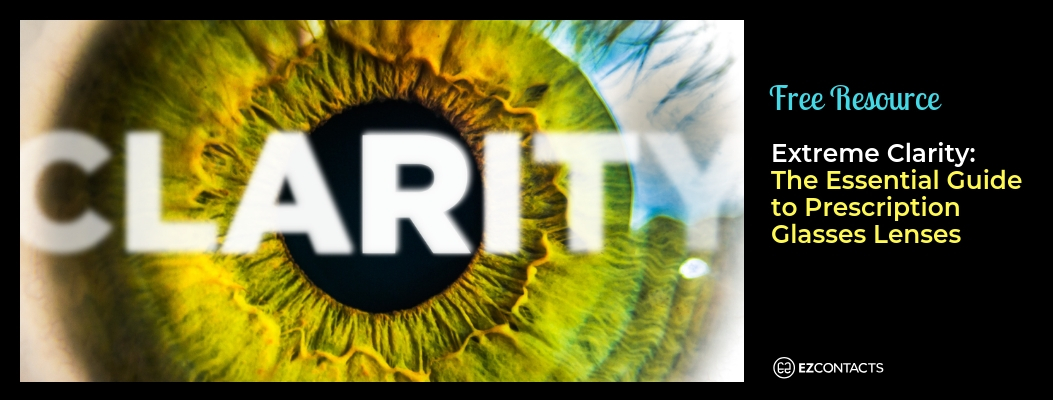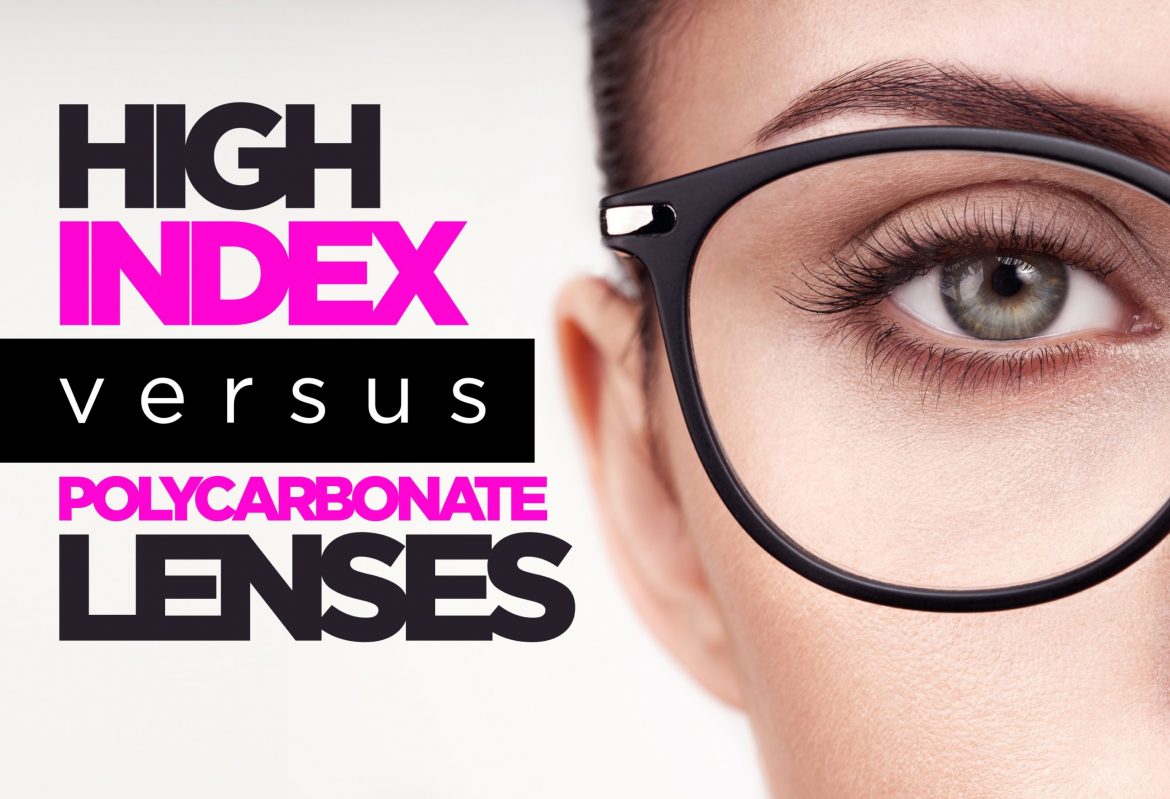
Getting new eyeglasses? The frames you select are what everyone will notice, but of course the lenses are responsible for correcting your vision.
You’re bound to be offered multiple options for lens materials, most commonly, high index and polycarbonate. If you’re like most, you probably put a lot more thought into selecting your frames than your lens material. Most customers base their decision on the price.
However, you should understand your choice will affect durability, visual clarity, and more. So we’ll examine the two most common lens materials here and present the advantages and disadvantages you should be aware of.
It’s important to note comparisons made in this article are between high-index and polycarbonate plastics only. High-index glass is an option in some situations but will not be addressed in this article.
Prescription range is an important factor
Prescription lenses are designed to refract light according to your prescription. When light enters the front surface of the lens and exits the back, its path is adjusted by the curves of the lens. The lower the index, the more material is needed to accurately refract light.
Generally speaking, high-index is best suited for higher (more severe) prescriptions. Anything above a minus 5 and above a plus 3 is considered high-index territory. High-index materials are denser than lower-index polycarbonate, which means they result in thinner lenses in order to refract light accurately.
For example, if a polycarbonate lens requires 2 millimeters of material to refract light, high-index may only need 1 millimeter.
Translation: high-index is the smart option for stronger prescriptions. Polycarbonate may not be the wrong choice, but your lenses will be thicker.
Lens materials affect thickness and weight
In a typical plastic or metal frame, thickness can be reduced by up to 20% by using high-index vs. polycarbonate lenses.
However, thinner lenses won’t necessarily mean they will weigh less. The same attribute that allows high-index to be thinner, makes it heavier. With all things equal, polycarbonate is up to 18% lighter than high-index.
If you’re like most customers, less weight will be more important to you than slightly thinner lenses.
Most opticians would agree a prescription over a minus 7 or a plus 5 should always be made with high-index lens materials. With prescriptions of this power, the reduced thickness with high-index will make-up for the increased weight.
High-index vs. polycarbonate: which is clearer?
When compared to other lens materials, high-index nor polycarbonate are known to provide the ultimate in optical clarity. The real winners are materials such as Trivex, CR-39 and Crown Glass.
Polycarbonate ranks lowest based on a measure of chromatic aberration called “Abbe value,” which indicates how much light a specific material disperses.
High-index lenses measure slightly better than polycarbonate.
- Polycarbonate Abbe value = 30
- High-index Abbe value = 36
- Basic plastic (CR-39) Abbe value = 58
- Crown glass Abbe value = 59
Should you worry about Abbe value? Probably not.
Polycarbonate is used in 35% of all prescription glasses. Most people can’t perceive the color distortion at these levels.
A safety factor
This one’s not a close call. Polycarbonate is by far the safest lens available. It’s up to 10X more impact-resistant than high-index lenses and is therefore the ideal lens material for sports protective eyewear and children’s glasses.
Polycarbonate is the standard choice for almost all eyewear that requires shatter and/or chip resistance.
Compatibility with additional features
Polycarbonate lenses are compatible with almost all popular lens add-on options. Due to its popularity, when a new version of a lens add-on is released, it tends to be available with polycarbonate first.
For example, the latest Transitions technology or polarized color option will be an option for polycarbonate lens material first. Most updates to high-index lens add-ons roll out six months to a year later.
Another example: both polycarbonate and high-index are available with polarized filters, but high-index may be limited to 2 colors whereas polycarbonate may offer 5.
If you’re looking to tint your lenses to a dark shade, you can’t do so with high-index lenses. Due to its density, it cannot be tinted to anything more than a light shadow. Polycarbonate comes with a coating which allows it to be tinted significantly darker than high-index.
Two helpful guidelines
- As a rule of thumb, if you have a strong prescription, high-index is the way to go. You’ll get thinner lenses with superior optical clarity.
- If your prescription isn’t quite as extreme (not in the range presented above), polycarbonate is a great choice. It’s lightweight, strong and the lenses generally cost less.
LEARN MORE: THE ESSENTIAL GUIDE TO PRESCRIPTION LENSES

